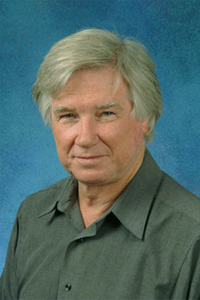Confirmed Keynote Speakers
Edgerton, V. Reggie

Distinguished Professor
Department of Integrative Biology & Physiology
University of California, Los Angeles
www.ibp.ucla.edu/research/edgerton
Dr. V. Reggie Edgerton received his Ph.D. in Exercise Physiology from Michigan State University and has been at the University of California, Los Angeles, since 1968. Dr. Edgertons laboratory focuses on two main research questions. One is, how, and to what extent, does the nervous system control protein expression in skeletal muscle fibers? Whole muscle, single motor units and single muscle fibers are studies physiologically and biochemically. Light and confocal microscopy including quantitative enzyme analyses and immunofluorescent microscopy are some of the experimental methods used to study motor unit plasticity. The principal animal models used are spinal cord injury, spaceflight and surgically induced compensatory hypertrophy. These studies have shown that although the nervous system has a significant influence on the kind and amount of specific proteins synthesized, there are factors intrinsic to individual fibers that also define these properties. The results show also that the neural influence that is associated with muscle fiber types is probably not mediated via the amount or pattern of activity of the motor units. The second is how the neural networks in the lumbar spinal cord of mammals, including humans, control stepping and how this stepping pattern becomes modified by chronically imposing specific motor tasks on the limbs after complete spinal cord injury. Limb motion, electromyographic and kinetic data are recorded to define locomotor characteristics. These studies have shown that the mammalian spinal cord can learn specific complex motor tasks such as standing and stepping. Considerable effort is focused on integrating neural models of locomotion with actual musculoskeletal properties that are subject specific. Another component of the modeling tasks is to develop robotic devices that can quantify and assist laboratory animals and humans with neuromuscular deficits to walk. A similar device is being developed for use by crewmembers in maintaining a critical level of control of locomotion in variable gravitational environments.
< back
Further information:
ICORR 2011
INRS 2011
ICVR 2011
Download:
Flyer "rehab week zurich"
Event Program
ICORR 2011
INRS 2011
ICVR 2011
Download:
Flyer "rehab week zurich"
Event Program